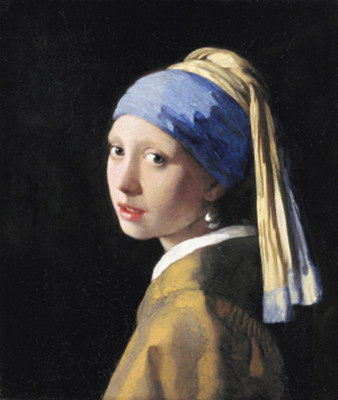藝術
Imitable
是可以模仿的
A master forger's works are auctioned
偽造大師的作品竟然被拍賣
THE sale of more than 200 drawings on October 22nd by a small auction house near Salisbury in south-west England has threatened to open old wounds in the art world. The works were by Eric Hebborn, a master forger.
10月22日,英格蘭西南部的索爾茲伯里市的一家小拍賣行售出了200多幅畫,再次揭開了藝術界塵封多年的傷口—這些作品都出自贗品畫大師赫伯恩之手。
Few have heard of Hebborn, but many museum-goers may have seen his handiwork, masquerading as old masters at major galleries around the world. He claimed his forgeries found homes in the world's most famous museums, though some friends, and enemies, disputed this. Some in the art world fear that the newly auctioned sketches, collected by his sister after he was murdered in Rome in 1996, could prove to be preliminary drawings which would reveal other major fakes. “This auction is going to open a very large can of worms,” says Simon Wingett, who auctioned Hebborn's works at Webbs of Wilton this week.
聽說過赫伯恩的人并不多,但是常去博物館的人可能在各地的大型畫廊見過他的贗品。他表示世界最有名的博物館也收藏著自己的贗品,盡管他的某些朋友或死敵對此表示不滿。赫伯恩于1996年在羅馬遭到謀殺身亡,之后其妹妹收集了他的素描。有人擔心最近拍賣的這些素描可能會扯出其他重要的贗品。這周在威爾頓的韋伯拍賣赫伯恩作品的西蒙·溫格特“這次拍賣將打開潘多拉之盒”

Born into a working-class London family in 1934, Hebborn won prizes as a student at the Royal Academy, but his own art brought him little acclaim, leading to suggestions that forgery was his means of revenge on a snooty art elite. Hebborn maintained that dealers were interested in money not art, claiming one paid him £750 for a forgery that he sold on for £90,000. As for art historians, “they just want to get a knighthood for knowing a lot about Rembrandt”. Art itself was neglected, he believed. He dismissed claims he was a crook, saying he, like many before him, simply made imitations.
赫伯恩于1934年出生于倫敦的工人家庭,在皇家藝術學院學習的時候他就曾多次獲獎,但是他自己的藝術作品卻未帶來多大的聲譽。因而人們猜測他做贗品是為了報復那些目中無人的藝術精英。赫伯恩認為那些商人不過只關注金錢而并非藝術,曾有人給他750歐元畫的作品轉手就賣了90,000歐元。在藝術歷史學家看來,“他們深入了解倫勃朗只為其所謂俠義之氣。”而藝術本身則被忽略了,赫伯恩認為。他反駁那些將自己看做是騙子的言論,而稱自己跟那些前人一樣,不過是做模仿而已。
He is thought to have produced about 1,000 forgeries over the course of his life, sold on by bamboozled dealers as the work of Rubens, Van Dyck, Brueghel and others. In 1978, a curator at the National Gallery of Art in Washington, DC, noticed that two drawings purchased from Colnaghi, a reputable dealer in London, were on the same kind of paper. The dealer admitted to having been duped, and prices on the London market for master drawings fell. In 1984 Hebborn confessed to having forged them and others. But he was never charged; the dealers and experts were too worried about rocking the market and exposing their own ignorance.
人們認為赫伯恩一生大約仿造了1,000幅畫,大多數是魯賓斯(姓氏,特指荷蘭著名畫家)、范戴克、布魯蓋爾(1525-1569,著名風景畫家)以及其他著名畫家的作品。1978年,華盛頓國家藝術館的館長發現兩幅購于倫敦著名的交易商——科爾納吉畫廊——的畫作使用的紙張是一樣的。該交易商承認被騙了,而且倫敦市面上原作的作品價格開始下降。1984年,赫伯恩承認他仿造了這些作品和其他的作品。但他從未因此吃官司,因為交易商和油畫專家非常擔心會因此震動市場,暴露自己的愚昧。
Though few people could tell the difference between his forgeries and the originals, there remains a difference in price. At Sotheby's in New York earlier this year, a painting by Brueghel fetched $5.2m. Hebborn's most expensive sketch this week went for £2,600.
盡管幾乎沒人能分辨出他的贗品和原作之間的區別,價格上還是有所不同的。今年早期在紐約索斯比拍賣行的一場拍賣上,布魯蓋爾的一幅畫達到了5200萬美元,而這周赫伯恩最貴的一幅畫僅為2500歐元。譯者:毛慧 校對:張娣
譯文屬譯生譯世












